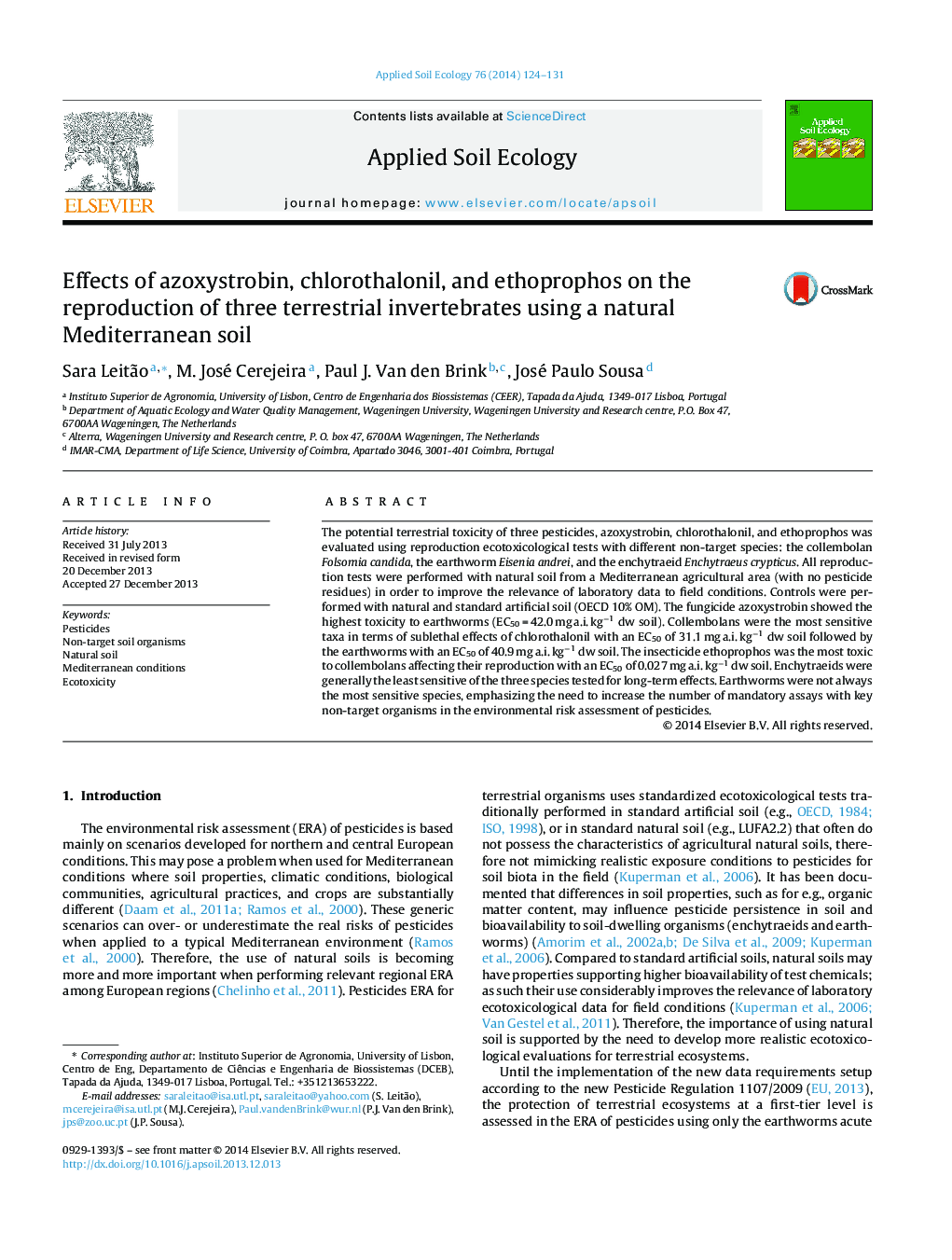| Article ID | Journal | Published Year | Pages | File Type |
|---|---|---|---|---|
| 4382268 | Applied Soil Ecology | 2014 | 8 Pages |
•Terrestrial ecotoxicity of three pesticides evaluated using natural soil.•Collembolans more sensitive to ethoprophos with EC50 of 27 μg a.i. kg−1.•Chlorothalonil showed high toxicity to collembolans with EC50 of 31.1 mg a.i. kg−1.•Fungicide azoxystrobin more toxic to earthworms with EC50 of 42 mg a.i. kg−1.•More than one species should be tested as mandatory in the pesticide ERA.
The potential terrestrial toxicity of three pesticides, azoxystrobin, chlorothalonil, and ethoprophos was evaluated using reproduction ecotoxicological tests with different non-target species: the collembolan Folsomia candida, the earthworm Eisenia andrei, and the enchytraeid Enchytraeus crypticus. All reproduction tests were performed with natural soil from a Mediterranean agricultural area (with no pesticide residues) in order to improve the relevance of laboratory data to field conditions. Controls were performed with natural and standard artificial soil (OECD 10% OM). The fungicide azoxystrobin showed the highest toxicity to earthworms (EC50 = 42.0 mg a.i. kg−1 dw soil). Collembolans were the most sensitive taxa in terms of sublethal effects of chlorothalonil with an EC50 of 31.1 mg a.i. kg−1 dw soil followed by the earthworms with an EC50 of 40.9 mg a.i. kg−1 dw soil. The insecticide ethoprophos was the most toxic to collembolans affecting their reproduction with an EC50 of 0.027 mg a.i. kg−1 dw soil. Enchytraeids were generally the least sensitive of the three species tested for long-term effects. Earthworms were not always the most sensitive species, emphasizing the need to increase the number of mandatory assays with key non-target organisms in the environmental risk assessment of pesticides.
